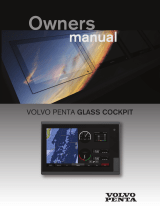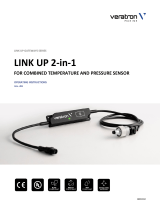
Mounting the Device
NOTICE
Be careful when cutting the hole to flush mount the device. There is only a small amount of clearance between
the case and the mounting holes, and cutting the hole too large could compromise the stability of the device
after it is mounted.
To avoid potential damage to the powder coating, use only the included screws to mount the device. Using
screws other than the ones included will void your warranty.
Do not remove the blue, rubber protective bumper until after the installation is complete. The bumper helps
protect the device from damage during installation.
The included template and hardware can be used to flush mount the device in your dashboard. There are three
options for hardware based on the mounting surface material.
• You can drill pilot holes and use the included wood screws.
• You can drill holes and use the included nut plates and machine screws. The nut plates can add stability to a
thinner surface.
• You can punch holes, tap them to M4, and use the included machine screws.
1Trim the template and make sure it fits in the location where you want to mount the device.
2Secure the template to the selected location.
3Using a 6.6mm (1/4in.) drill bit, drill one or more of the holes inside the corners of the solid line on the
template to prepare the mounting surface for cutting.
4Using a jigsaw or rotary tool, cut the mounting surface along the inside of the solid line indicated on the
template.
5Place the device in the cutout to test the fit.
6If necessary, use a file and sandpaper to refine the size of the cutout and remove any burrs caused by cutting
the opening.
7After the device fits correctly in the cutout, ensure the mounting holes on the device line up with the larger
7.2mm (9/32in.) holes on the template.
8If the mounting holes on the device do not line up, mark the new hole locations.
9Based on your mounting surface, drill or punch and tap the larger holes:
• Drill 3.2mm (1/8in.) pilot holes for the included wood screws, and skip to step 18.
• Drill 7.2mm (9/32in.) holes for the included nut plate and machine screws.
• Punch and tap M4 holes for the included machine screws, and skip to step 18.
10 If using the nut plates, starting in one corner of the template, place a
nut plate over the larger hole drilled in step 9.
The smaller hole on the nut plate should line up with the smaller
hole on the template.
11 If the smaller 3.6mm (9/64in.) hole on the nut plate does not line up
with the smaller hole on the template, mark the new location.
12 Repeat steps 10 and 11 for each nut plate.
13 Using a 3.6mm (9/64in.) drill bit, drill the smaller holes.
14 Remove the template from the mounting surface.
4























